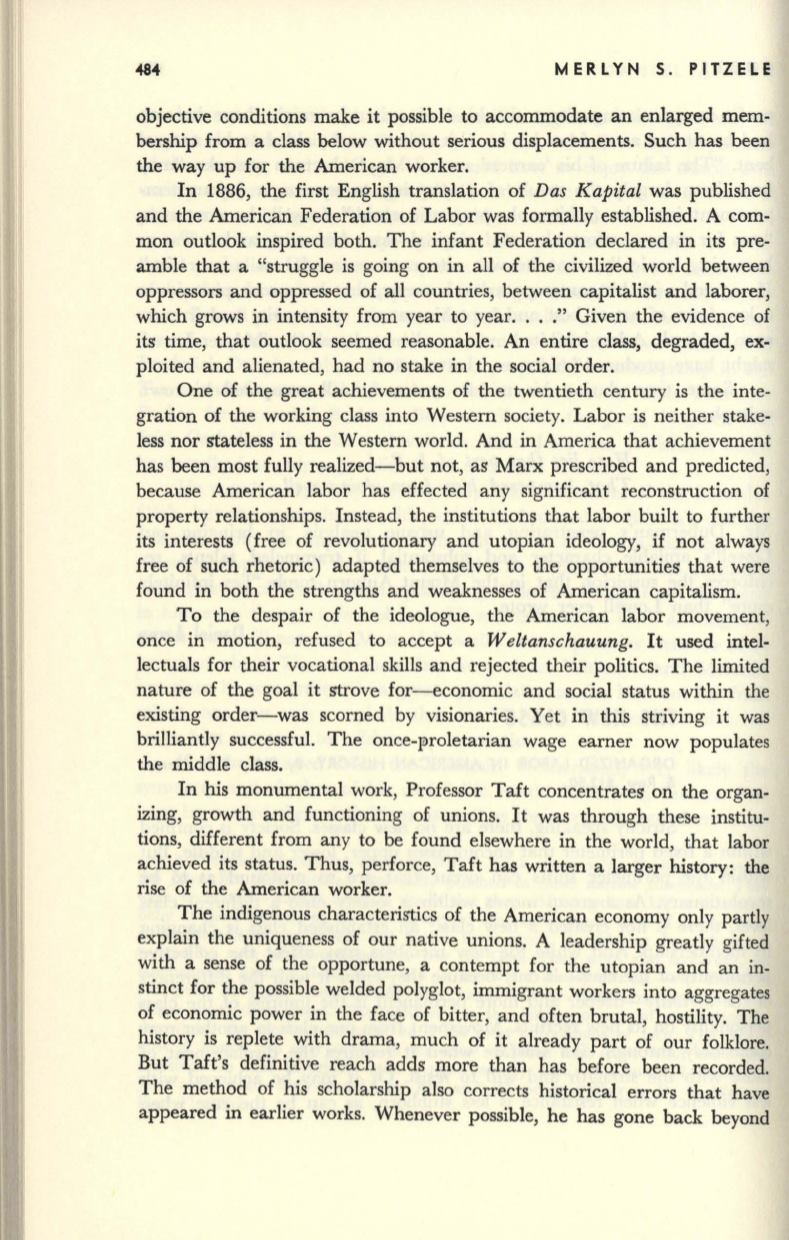
MERLYN S. PITZELE
objective conditions make it possible to accommodate an enlarged mem–
bership from a class below without serious displacements. Such has been
the way up for the American worker.
In
1886, the first English translation of
Das Kapital
was published
and the American Federation of Labor was formally established. A com–
mon outlook inspired both. The infant Federation declared in its pre–
amble that a "struggle is going on in all of the civilized world between
oppressors and oppressed of all countries, between capitalist and laborer,
which grows in intensity from year to year...." Given the evidence of
its time, that outlook seemed reasonable. An entire class, degraded, ex–
ploited and alienated, had no stake in the social order.
One of the great achievements of the twentieth century is the inte–
gration of the working class into Western society. Labor is neither stake–
less nor stateless in the Western world. And in America that achievement
has been most fully realized-but not, as Marx prescribed and predicted,
because American labor has effected any significant reconstruction of
property relationships. Instead, the institutions that labor built to further
its interests (free of revolutionary and utopian ideology, if not always
free of such rhetoric) adapted themselves to the opportunities that were
found in both the strengths and weaknesses of American capitalism.
To the despair of the ideologue, the American labor movement,
once in motion, refused to accept a
Weltanschauung.
It
used intel–
lectuals for their vocational skills and rejected their politics. The limited
nature of the goal it strove for-economic and social status within the
existing order-was scorned by visionaries. Yet in this striving it was
brilliantly successful. The once-p>roletarian wage earner now populates
the middle class.
In
his monumental work, Professor Taft concentrates on the organ–
izing, growth and functioning of unions. It was through these institu–
tions, different from any to be found elsewhere in the world, that labor
achieved its status. Thus, perforce, Taft has written a larger history: the
rise of the American worker.
The indigenous characteristics of the American economy only partly
explain the uniqueness of our native unions. A leadership greatly gifted
with a sense of the opportune, a contempt for the utopian and an
in–
stinct for the possible welded polyglot, immigrant workers into aggregates
of economic power in the face of bitter, and often brutal, hostility. The
history is replete with drama, much of it already part of our folklore.
But Taft's definitive reach adds more than has before been recorded.
The method of his scholarship also corrects historical errors that have
appeared in earlier works. Whenever possible, he has gone back beyond


